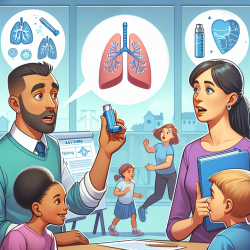In the realm of special education, the safety and well-being of students are paramount. A recent study titled "Perspectives from law enforcement officers who respond to overdose calls for service and administer naloxone" sheds light on critical practices that can enhance the safety protocols within schools. The findings from this research are not only relevant to law enforcement but also offer valuable insights for educators and school administrators.
The study highlights the experiences of law enforcement officers who respond to overdose incidents and administer naloxone, a life-saving drug that reverses opioid overdoses. By understanding these perspectives, schools can implement better emergency response strategies, ensuring the safety of students and staff.
Key Takeaways from the Research
- Importance of Training: The research emphasizes the need for thorough training for those administering naloxone. Schools should consider training staff members, especially those involved in student health and safety, on how to use naloxone effectively.
- Emergency Preparedness: The study reveals that law enforcement officers often arrive on the scene before emergency medical services. Schools should review their emergency preparedness plans to ensure they are equipped to handle such situations swiftly.
- Understanding Good Samaritan Laws: The research underscores the importance of Good Samaritan Laws, which protect those who assist in an emergency from legal repercussions. Educators and administrators should be aware of these laws to encourage timely and life-saving interventions.
Implementing the Findings in Schools
To enhance school safety, practitioners can take several steps based on the research findings:
- Staff Training Programs: Implement regular training sessions for staff on administering naloxone and handling overdose situations. This can include practical demonstrations and scenario-based training.
- Emergency Response Drills: Conduct regular drills to ensure that all staff are familiar with the protocols for responding to overdose incidents. These drills should simulate real-life scenarios to test the preparedness of the school.
- Policy Review and Updates: Review and update school policies to align with the latest research and best practices in overdose response. Ensure that policies are clear, accessible, and communicated to all staff members.
- Collaboration with Local Law Enforcement: Establish partnerships with local law enforcement agencies to facilitate joint training sessions and share best practices. This collaboration can also help in the swift response to any incidents on school grounds.
Encouraging Further Research
While the current research provides valuable insights, it also opens the door for further exploration. Schools and educators should be encouraged to engage in ongoing research and stay updated with the latest findings. This continuous learning approach will ensure that they are always prepared to handle emergencies effectively.
To read the original research paper, please follow this link: Perspectives from law enforcement officers who respond to overdose calls for service and administer naloxone.










